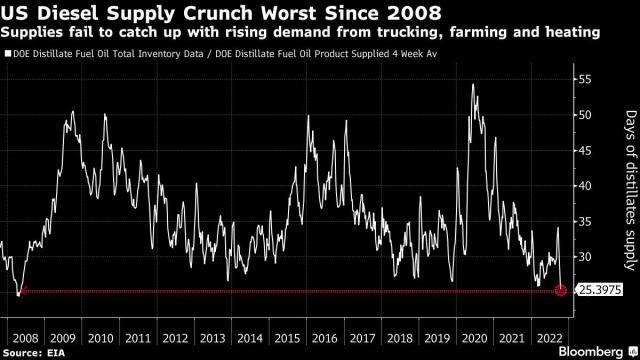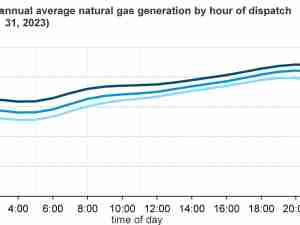Diesel demand is surging in the US while supplies remain at the lowest seasonal level ever, according to government data released Wednesday.
The shortage of the fuel used for heating and trucking is a key worry for the Biden administration heading into winter -- and ahead of the November election. National Economic Council Director Brian Deese told Bloomberg TV Wednesday that that diesel inventories are “unacceptably low” and “all options are on the table” to build supplies and reduce retail prices.
The US is has just 25 days of diesel supply, the lowest since 2008, according to the Energy Information Administration. At the same time, the four-week rolling average of distillates supplied, a proxy for demand, rose to its highest seasonal level since 2007. While weekly demand dipped slightly, it’s still at highest point in two years amid higher trucking, farming and heating use.

The diesel crunch comes just weeks ahead of the midterm elections and has the potential to drive up prices for consumers who already view inflation and the economy as a top voting issue. Retail prices have been steadily climbing for more than two weeks. At $5.324 a gallon, they’re 50% higher than this time last year, according to AAA data.
Nationally, stockpiles have drained as refiners entered maintenance season and as Russia’s war in Ukraine tightened global supplies and limited imports. Market backwardation -- where prompt deliveries are priced at a premium over future deliveries -- has made building inventory extremely costly, feeding into a vicious cycle of tight supplies and price spikes.
In New England, where more people burn fuel for heating than anywhere else in the country, stockpiles are less than a third of typical levels for this time of year.
Some relief is on the way. At least two vessels carrying around 1 million barrels of diesel are due to arrive in New York after being diverted from their original destinations in Europe. Delta Air Line’s Trainer refinery in Pennsylvania is also returning from seasonal maintenance, which will increase regional diesel production.








